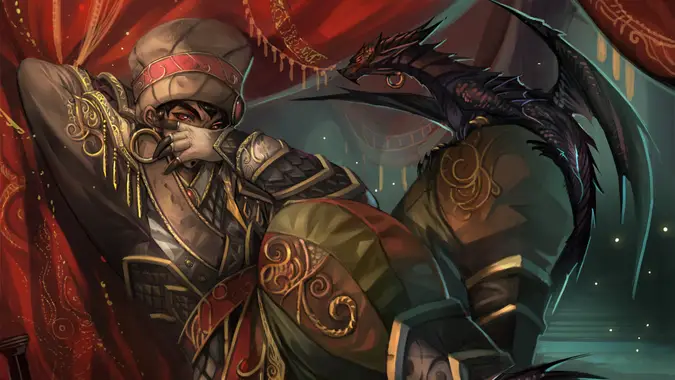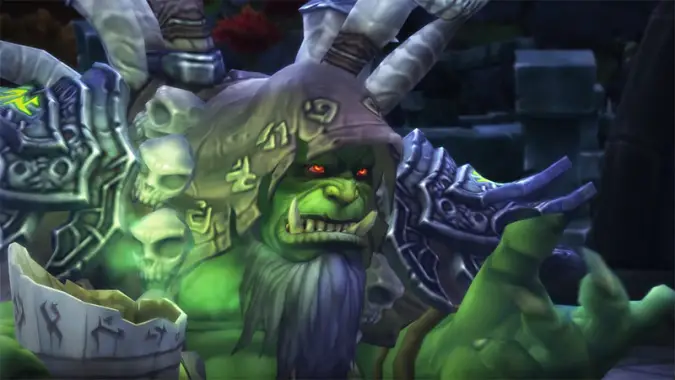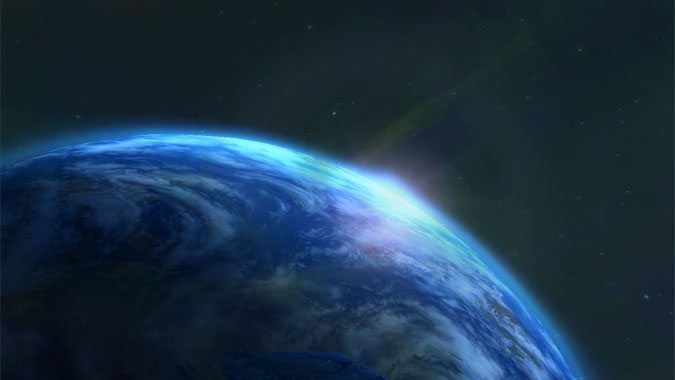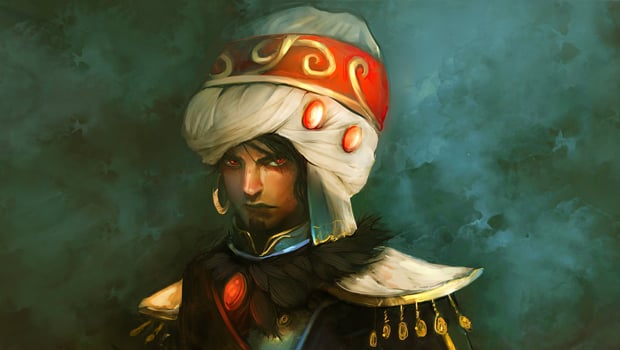Know Your Lore, Tinfoil Hat Edition: Wrathion’s task

Maybe we’ve been going about this all wrong. Everything we know about Wrathion seems to be a contradiction of motives. He showed up in Mists and appeared to be very concerned with the fate of the world. Yet when things didn’t go according to plan, he helped orchestrate Garrosh Hellscream’s escape. For someone so bent on the defense and protection of our world, that felt a little odd, to say the least.
Given his activity in Mists of Pandaria, we were flat out expecting to see Wrathion in Warlords and Legion. In both expansions, it seemed almost a given we’d see him. Everything we knew about him, about his task suggested it was a certainty. But maybe we’ve been mistaken all this time. You see, we’ve been looking at Wrathion as if he’s a dragon.
And he’s not. …not exactly.
Today’s Know Your Lore is a Tinfoil Hat edition. The following contains speculation based on known material. These speculations are merely theories and shouldn’t be taken as fact or official lore.
Please note: There are some spoilers for 7.3 at the end of this column.

Creation
Wrathion is an amalgamation of three distinct black dragons — two in the shell, one a corpse. Dr. Blam implied that Nyxondra’s egg was somehow “pre-engineered” — tampered with — but we don’t know in what capacity. Whatever Rhea was doing to Nyxondra is now lost to time, given both of their deaths in Cataclysm. But we do know that she hadn’t actually found what she was searching for — a way to purify the Black Dragonflight. That’s your job, when you take the three dragons to Dr. Blam.
Blam’s heard that the Titans created the dragons. So he sends you to the site of some ruins, to fetch an item called the Eye of the Watchers. When you bring it back, the device boots up almost by itself and announces it’s scanning for an objective. Once that objective is identified, it then scans both eggs and the corpse, and compiles all three into one purified black dragon egg.
Wrathion would not exist without the Eye of the Watchers. He introduces himself as a black dragon free of corruption — but he’s more than that. In his unique way, he’s a product of Titan engineering — a Titan-forged. Perhaps the first true Titan-forged Azeroth has seen since the second generation created through the Forge of Wills, millennia ago. Consider this: Why did Deathwing so desperately want Wrathion destroyed? To the point where he showed up personally to take care of the task? Because the egg was going to kill the Black Dragonflight?
Or was it because Wrathion may be carrying an implanted protocol that spells certain destruction not for the Black Dragonflight, but for their erstwhile masters, the Old Gods? A solution to the problem the Titans tried to answer after the fall of the Black Empire?

Protocol: Objective
What were Wrathion’s first actions immediately after hatching? He scoured the world of the Black Dragonflight. This was in part because they were causing “untold suffering,” but more importantly because they posed a threat to Wrathion. If he wanted to live, they needed to die. Rhea’s solution was not the solution it seemed — it was merely the beginning of something entirely new. And if we look at Wrathion not as a black dragon, but as a construct, we could consider these actions stage one of a lengthy process.
Deathwing was arguably the first and most powerful creature to fall under the sway of the Old Gods. He and his Dragonflight have been working for their motives the longest. In that way, they represented some of the most powerful allies the Old Gods had. In Cataclysm, it was our objective to take out the relentless armies at Deathwing’s disposal before tackling him directly. Wrathion’s objective was different — to take out the Old Gods’ allies before tackling them directly.
Once that objective was accomplished, Wrathion left. At some point during his absence, he saw a vision of the Legion’s arrival, and that represented his next obstacle. We could not effectively fight the Old Gods if we were preoccupied with the Legion. We could not effectively fight the Legion if we were preoccupied with each other. So Wrathion attempted to fast-track the Alliance-and-Horde conflict, essentially uniting us so that we’d be prepared to defeat the Legion when they inevitably arrived.
Except we didn’t work according to protocol. We possess free will — and that free will saw Varian Wrynn allow the Horde to continue, despite its transgressions. One might view that as an error on Wrathion’s part, or one might view that as stage one analysis: complete.

Protocol: Analysis
Tong, despite his status as “just a waiter,” made a very good point at the end of the legendary campaign. The Horde and Alliance aren’t strong despite each other; they’re strong because of one another. And we’ve proven this again and again over the years. When the world itself is in danger, we are more than capable of putting hatreds temporarily aside and working together. When that danger is absent, we turn against each other. Make no mistake, the Horde was sent to Azeroth to conquer it. Instead, the world absorbed it, and used it to make Azeroth stronger. {PB}
Why, then, did Wrathion help set Garrosh Hellscream free? Why wasn’t he in Warlords? And why isn’t he in Legion? Because stage two of Wrathion’s directive came after that analysis — we’re strong and we unite against a common objective. Therefore, the logical progression down this path of seeming madness was not to kick the conflict between Alliance and Horde into fast forward. It was to kick the conflict between Azeroth and the Burning Legion into fast forward.
Garrosh Hellscream was irrelevant. The Iron Horde was completely irrelevant. In fact, the only relevant thing to come out of the entirety of the Warlords expansion — the only thing to follow us back to Azeroth — was Gul’dan. If Garrosh had not traveled to that reality, Gul’dan never would have arrived here. The Tomb of Sargeras would have remained sealed, for who knows how long.
And in that lengthy period of time, the Old Gods would work their way even deeper into Azeroth. Wrathion couldn’t allow that to happen. We were already prepared to face the Legion, he just needed to make it happen.

Protocol: Excision
Why wasn’t Wrathion in Warlords? Because he didn’t need to be. We were doing the job for him. Trying to take a direct hand in matters might’ve tipped off the Legion that there was something larger going on. He was present — observing, silently — but he didn’t interfere. Notice when Wrathion does appear in Warlords. It’s the moment when we hand over the Tomes of Chaos — the moment when Cordana declares her allegiance to Gul’dan and the Legion. It’s the moment she escapes.
When we see her next, she’s leading Gul’dan exactly where he needs to be — into the Vault of the Wardens, on Azeroth. There, they were to retrieve Illidan’s body in order to use it as a host for Sargeras’ spirit. Essentially, this was the moment that kicked off the events in Legion. Wrathion saw this, and didn’t interfere — he flew away. He wasn’t there to stop it from happening; he was there to make sure it happened.
Wrathion’s been absent in Legion as well — we haven’t heard a peep from him, other than a brief appearance at the Obsidian Dragonshrine in Northrend. Even then, he was visiting the Dragonshrine for his own amusement. He had no vested interest in the fight against the Burning Legion — he just needed to make sure it happened. Once that wheel was set into motion, it was time to sit back and let things progress as intended.
Protocol: Purification
If we think of him as a Titan-forged creation, Wrathion is neither good nor evil — he’s a construct. He’s not acting out of some moral compass or ethical ideal. He’s responding to his programming — performing a protocol as intended. What then, you might ask, is the reasoning behind all of this? What is Wrathion trying to accomplish?
For that, we have to look at what Wrathion was doing while we thought he was simply ordering us around in Pandaria. His Blacktalon agents were investigating Pandaria’s water in both the Valley of the Four Winds and the Vale of Eternal Blossoms. This water is the same water that made up the Well of Eternity — the blood of Azeroth’s wounded world-soul. He sought more information about the mogu, particularly after he learned of their Titan connections.
And then he devoured the heart of the Thunder King, the power of Ra-den and the last remnant of Aman’Thul. He learned, in that moment, of the Pantheon’s fate — and potentially Azeroth’s. I believe this is also where he began to understand why he was created, what he was doing and why he was doing it. Up until that point, Wrathion had been acting on instinct…or so he thought. He may very well have thought the Legion was the biggest threat at that point in time.
I think, in a way, Wrathion’s objective in Mists wasn’t just the preservation of Azeroth — a noble enough cause on its own — but to understand his own origins. To figure out what his purpose in the world was. He discovered it in Pandaria, and proceeded to continue as his programing directed, towards one fateful goal.
The purification of Azeroth.

Eye of the Watchers
That relic that created Wrathion wasn’t just any ordinary artifact — the Eye of the Watchers was in the Badlands. It’s the same place Archaedas fled to after discovering Loken’s betrayal. Tyr, Archaedas, and Ironaya were aware of Loken’s corruption, and stole the Discs of Norgannon to investigate the extent of Loken’s misdeeds. But that might not have been all they took or did out there in the wilderness. It was obvious that the containment of the Old Gods was a failure…so maybe they were looking for a different solution.
The answer to Wrathion’s purpose lies in the method of his creation. He’s not just a purified black dragon — he’s living, breathing proof that the Pantheon was right. Sargeras was wrong. There is a way to purify a world-soul, without destroying it. Wrathion is a small-scale experiment to rid a creature of the taint of the Old Gods, and that experiment was a success. It’s entirely possible that he is now trying to engineer that same experiment on a cosmic scale.
In order to do that, he needs a few things. He was created with three items. The first was a wild black dragon egg. Lucky us, we’ve got a wild Titan egg, a world-soul in Azeroth. He was also created with a second egg, and a black dragon corpse.
Isn’t it convenient, then, that Argus and possibly the Dark Titan himself have been brought to our front door?
We don’t know what’s going to happen after 7.3 is over. We do know that Azeroth’s been having nightmares — both about the Legion, and about the Old Gods. Of course this entire column is speculation — but I’m curious to see if Wrathion will make an appearance, and what his role in the future of Azeroth will turn out to be.
Please consider supporting our Patreon!
Join the Discussion
Blizzard Watch is a safe space for all readers. By leaving comments on this site you agree to follow our commenting and community guidelines.
 @Shadesogrey
@Shadesogrey




